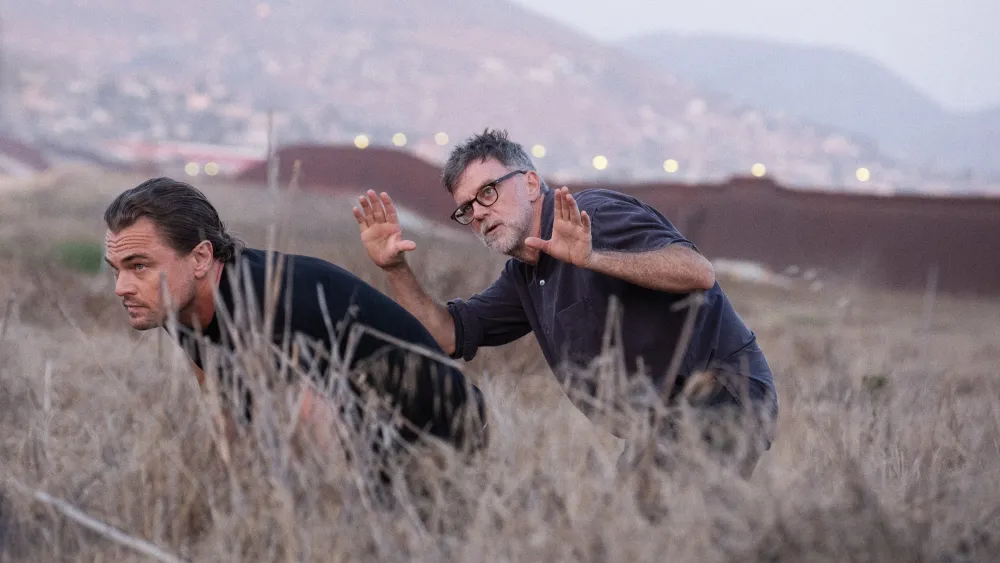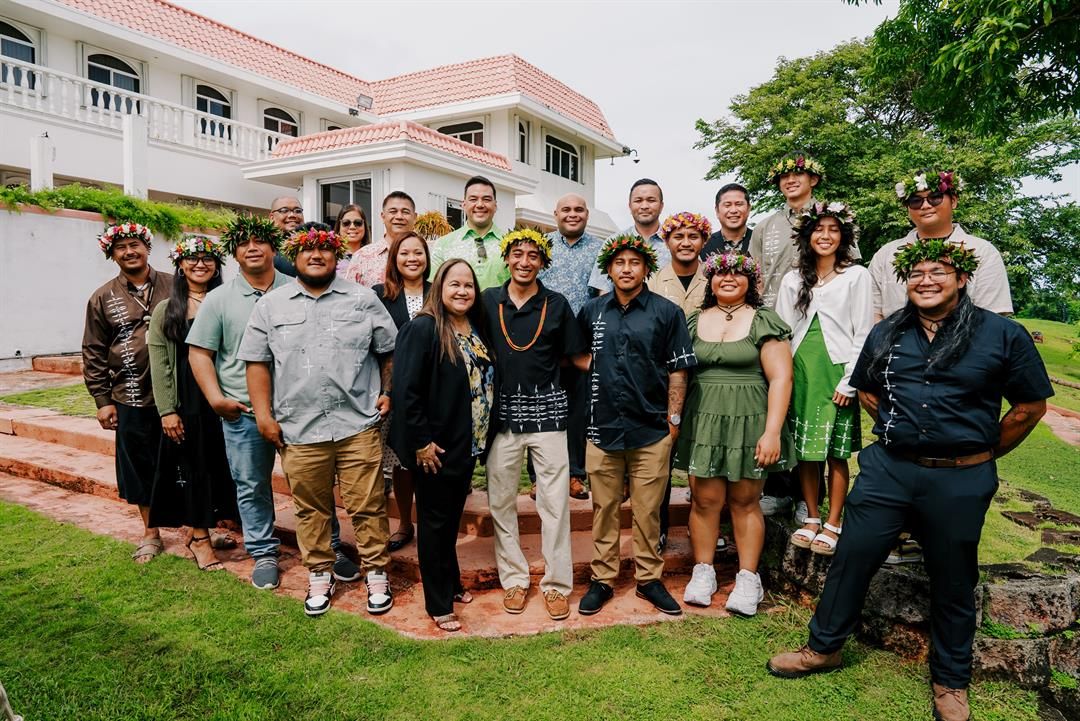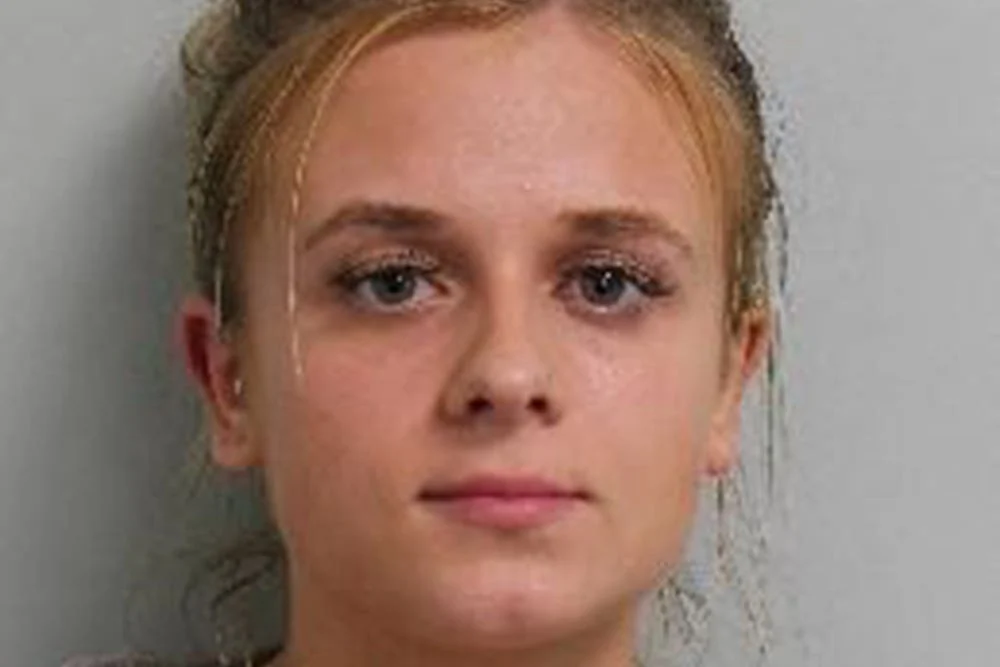
All Paul Thomas Anderson movies are layered with fascinating characters and distinctive looks, but “One Battle After Another” might be the most ambitious of them all in terms of its massive scope. The movie races across the desert east of San Diego, down to the Tijuana border and into the NorCal redwoods as Sean Penn’s whacked-out Col Steven J. Lockjaw pursues Leonardo DiCaprio‘s depressed stoner Bob and his radiant teenage daughter Willa, played by Chase Infiniti.
Pulling together all these locations and settings was no small feat, production designer Florencia Martin tells Variety. For Anderson’s last movie, “Licorice Pizza,” Martin meticulously reproduced the streetscapes, homes and restaurants of the 1970s San Fernando Valley. But “One Battle After Another” was an epic of another magnitude — set in the sort-of present day, but occupying a reality all its own.
Anderson had been mulling the project for years, but research for locations started just before the Coivd pandemic, with serious scouting beginning in 2022.
In Thomas Pynchon’s novel “Vineland,” on which “One Battle After Another” was loosely based, the revolutionary group based on the Weather Underground flees to Humboldt County in the far north of California. So the scouting trip started up north in Eureka.
“That was the way we approached finding this film,” Martin says. “We’d go to all these inland neighborhoods like Sacramento, Stockton, Fresno. It really is like a tapestry of California to me – a California that we don’t really know.”
The big-budget production filmed in at least nine counties in California, at L.A. Center Studios and in El Paso, Texas, with help from $8.4 million in California production subsidies. But the locations weren’t the typical coastal sights of the Golden State — instead, the Sacramento rail yards, the Tijuana border crossing at Otay Mesa and the undulating hills of the Anza-Borrego desert are some of the places that make “One Battle” completely distinctive from other California-set films.
When the film jumps forward 16 years, viewers might wonder if it’s 16 years in the future — or if the early scenes are in fact 16 years in the past. But Anderson keeps things a bit mysterious.
“We’re not trying to say this is a story that takes place today, but this is a story that is happening in present time,” Martin says cryptically.
Viewers will also have to use their imagination to visualize the central fictional city of Baktan Cross, which is a combination of Eureka and El Paso. The dramatic dance scene was filmed at Eureka High School, with actual students as background actors, while Eureka’s Reagan Mansion was, fittingly, the headquarters for the nefarious Christmas Adventurer’s Club
Creating the technology for revolutionaries operating in an amorphous present, such as the scanner device, was another fascinating challenge. “That was very fun, a long process to get to the scanners and how this group works,” Martin explains. “It was just looking at 3G networks and ham radios and satellite and how would people communicate given a circumstance like this — and also a little bit of fantasy too, with this trust device. And how a mad scientist like Howard Sommerville would create something that is this specific — it’s already old.”
Martin spoke to Variety to break down how some of the most arresting scenes in “One Battle After Another” were created.
Bob and Willa’s House
“Bob has evolved from his politics, and now is like a hermit,” Martin says. “We ended up in a single bedroom house that was engulfed by redwoods.” The tunnel that leads to the outhouse was up the street, and the property the team found where the tunnel comes out was like “a theme park of tiny cars all engulfed with moss,” Martin marvels. “We built the redwood outhouse amongst those cars in the backyard, as if that’s also one of Bob’s hobbies.”
After Willa’s bedroom was built onto the small house, the cottage was dressed to show the accumulation of the years the father and daughter had lived there. “It’s that sense of someone who found a little sanctuary and a little privacy and got really settled in,” Martin says. “We had a lot of artwork from Paul’s kids and our set decorator, Anthony Carlino, and Willa — Chase Infiniti — gave us her photos of when she was a baby. We made certificates from elementary school and middle school. And she has all her karate trophies. And the calendar from Sensei, which becomes a clue of trying to find her.”
Sensei’s ‘underground railroad’ apartment
Though much of “One Battle” was shot up and down the length of California, El Paso also provided an important setting with its historic architecture and selection of Latino businesses. Benicio del Toro’s Sensei oversees a sprawling apartment building that harbors refugees. Anderson’s camera travels through the warren of living spaces, richly layered with the objects of family life.
“With the local location scout, Jacob Cena, we started getting access to all these rooftops and stores,” Martin explains. “When we went to the Genesis Perfumeria (where Benicio del Toro’s wife works in the film) we just saw this incredible fluorescent green interior with thousands of perfume bottles. They have these stairs that led upstairs. That’s how his story started to grow. And we were very fortunate that the second floor of that entire block was empty. So I built Sensei’s apartment with my team practically on the second floor.
“That is one of my favorite sets I’ve ever been a part of, and I worked very closely with Anthony Carlino, our set decorator,” Martin says. “We gave a story to each of these family members, and then worked with Cassandra (Kulukundis) on the casting of which type of family lives here, which type of family lives there.”
Sisters of the Brave Beaver compound
The crew drew on a number of local experts to consult on everything from ham radio to architecture. Those experts included the Sisters of the Valley, an actual group of non-religious “weed nuns” based in Merced, Calif. who helped inform the idea for the compound belonging to the movie’s Sisters of the Brave Beaver.
“You don’t really see it, but they actually had a really big marijuana growing section to the convent,” Martin says of the concept behind the hideout.
The Sisters’ convent was filmed at La Purisima Mission in Lompoc, north of Santa Barbara, now a public park. Martin explains that Anderson had an image of where he wanted to shoot, but it was hard to track down the site. “We went to about six missions along the Camino Real mission trail. Paul had a beautiful photograph or painting of a dilapidated mission set against the hills with this church and we couldn’t find it,” she recalled. And most of the missions looked too perfect. “It was one of the most challenging set pieces, because California has done a magnificent job at restoring all these missions.
“La Purisima was the most stripped away, the closest to being a believable space that these women would have found in the secluded hills and taken it over, initially as a sanctuary place to welcome people, and then now it’s a monetized situation. Their story is they no longer harbor people. They have to make money, living together as a group of women.”
Anderson envisioned the scene where Penn’s Lockjaw does his paternity test with Willa as taking place in a chapel, so La Purisima’s sanctuary provided the perfect backdrop for his perverse quest.
The border detention camps
Martin consulted contemporary and historic photos of border camps to design the chilling compounds where children and families are held in chain-link fencing pens. The crew also worked with a military advisor. “I spoke to a lot of people in the military and who had been deployed,” Martin says.
“It’s a temporary camp in the beginning of the film. They’re set up to detain people, and they’re not fully organized yet. The idea in the beginning, which is based on a real happening, was that they were detaining people under overpasses, which our location manager, Michael Glaser, had the challenge of finding. He found the most incredible spot that allowed us to create this camp right next to the border wall. We would have Border Patrol and immigrants crossing in as we were shooting.”
“It’s a very sensitive subject and heartbreaking seeing the way that these families are split up and children are detained, so we just tried to be really respectful to what these processes were and not make up our own interpretation of it, but really look at how these detention centers are run and laid out,” says Martin.
The car chase
Returning from scouting in Blythe near the Arizona border, Martin came across what would become the epic setting of the chase scene. “We were going back to Borrego Springs, and we all got on this road and instantly felt how special and magnetic and unique it was, to suddenly be dipping up and down through these hills. So then I studied the landscape all through Borrego Springs and Anza Borrego and pieced together the sequence,” she says.
“The road where Lockjaw drops Avanti off is in Ocotillo Wells. And that road that connects you from Ocotillo to Borrego Springs became Lockjaw’s road. And then that car flipping is in Borrego Springs. It’s a lot of studying of the architecture of the road, and working really closely with Paul and (cinematographer) Mike Bauman on time of day and directionality. Then the most satisfying one is the car chase at the end, in the Texas Dip, which is in Borrego Springs, which is this huge dip down and back up, and that just seemed like the way to punctuate this moment.
“We call it the river of hills, that highway. Paul is someone who likes to do a lot of camera tests, so you try to come in with everything, with as much as information and planning as you can, but also leaving some room to explore,” Martin says.
Martin cut her teeth in the art department for “Mad Men,” which famously made use of L.A.’s mid-century landmarks to stand in for New York, so she’s long had a close connection to shooting locally.
But “One Battle After Another” was her biggest undertaking yet. “This was, bar none, the most extensive scouting away from home that I’ve done,” Martin says, “getting the chance to explore California like this and really connect to the community.”
“The biggest thing too, is to be able to continue to film in California and work with my team, who I think, are all best in the business,” says Martin, “I just hope that we can continue that, right?”



